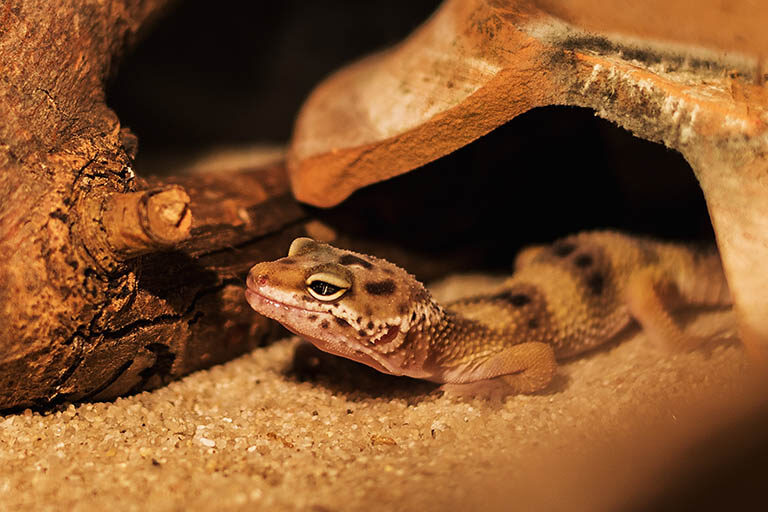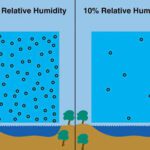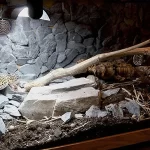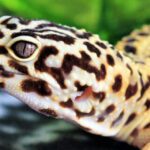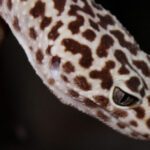Leopard geckos are one of the most popular pet reptiles, and for good reason. These docile lizards are easy to handle, have simple care requirements, stay a reasonable size, and come in a variety of beautiful morphs. However, there is one aspect of leopard gecko care that often gets overlooked – the photoperiod. In this article we talk about the photoperiod for Leopard geckos.
Table of Contents
What is Photoperiod?
Photoperiod refers to the cycles of light and darkness that an animal experiences. In the wild, leopard geckos experience natural shifts in daylight as the seasons change. The photoperiod impacts their behavior, specifically their breeding cycle. As captive pets, it’s important we aim to mimic their natural photoperiod. Doing so will keep them healthy and happy.
Why Photoperiod Matters
Leopard geckos are physiologically impacted by photoperiod. The amount of light they get signals to their brain and hormones whether conditions are suitable for breeding. As daylight hours decrease in the fall, it triggers leopard geckos to prepare for brumation. Brumation is similar to hibernation but reptiles don’t sleep as heavily and their body temperature decreases slightly. Out of brumation, increasing daylight hours in the spring initiates breeding behavior.
By controlling the photoperiod for our leopard geckos, we can give them the seasonal cues they need. This is especially important for breeding geckos. But even non-breeding pets can benefit from appropriate seasonal cycling.
Natural Leopard Gecko Photoperiod
In their native habitat of Afghanistan, Pakistan, and northwest India, leopard geckos experience seasonal shifts in daylight. They are most active during the warm summer months of long daylight. When winter approaches, daylight hours decrease, temperatures drop slightly, and leopard geckos become less active.
Summer (April – September)
- 14+ hours of daylight
- Daytime temperatures of 82-86°F
- Primarily nocturnal but some activity during the day
Winter (October – March)
- 10 hours or less of daylight
- Nighttime temperatures dropping to 65-75°F
- Brumation period with very little activity
As the seasons progress, so does the leopard gecko’s behavior and appetite. Care should be adjusted accordingly.
Setting Up Proper Photoperiod
In captivity, leopard geckos rely on us to provide appropriate cycles of light and dark. Here are tips for setting up proper photoperiod:
Lighting Equipment
Use a timer or smart plug to control the lights. Automatic control ensures consistency. Choose a daytime heat bulb that also emits light, such as a halogen bulb. Have a separate heat source for nighttime like a ceramic heat emitter or heat mat. Use a thermometer to monitor temperatures.
Enclosure Location
Place the enclosure in a room that doesn’t get excessive daylight. Direct sunlight shining into the tank can lead to overexposure. Make sure the nighttime room stays dark while lights are off. Cover the tank at night if needed to block ambient light.
Daylight Hours
In summer, the light should be on for at least 12 hours per day. Slowly decrease to 8-10 hours per day for winter. The light and heat during the day should keep the warm side of the tank around 82-86°F. The nighttime temperature can drop to 65-75°F. Install a thermostat to control supplemental heating at night if needed.
Adjusting Photoperiod
As seasons change in the Northern Hemisphere, adjust photoperiod every 2-3 weeks. For example, in early March, increase daylight hours to mimic spring. Up to 14 hours or more of light can be provided in peak summer. Then reduce hours as fall approaches, down to 8 hours in deep winter.
Monitor Behavior
Pay attention to behavior shifts as photoperiod changes. Appetite and activity levels may fluctuate. Brumation typically lasts 4-8 weeks but can vary individually. Make sure your gecko remains healthy if brumating. Contact your exotics vet with any concerns.
Breeding Cycles
To stimulate breeding, provide a winter cool-down for 1-3 months with limited daylight and slightly lower temperatures. Then return to long daylight hours and warm temperatures in spring. Introduce mature males and females at this point and watch for courtship rituals. Provide ample hide boxes for egg laying.
Troubleshooting Photoperiod Issues
Setbacks in maintaining appropriate photoperiod are common. Here are some issues and solutions:
Problem: Daytime temperatures are too low.
Solution: Use a more powerful heat bulb, lower wattage for nighttime, or add supplemental heat.
Problem: Nighttime temperatures don’t drop enough.
Solution: Decrease ambient temperature with AC or ventilation. Remove supplemental heating at night if possible.
Problem: Irregular light schedules from frequent power outages or timer issues.
Solution: Get a battery powered timer, hook lights up to a UPS, or manually control lighting.
Problem: Too much natural daylight reaches the enclosure.
Solution: Move the enclosure to a darker room, cover part of the mesh top, or construct a partial cover to block light.
An Appropriate Photoperiod is Key
Mimicking the natural photoperiod leopard geckos experience in the wild is crucial for their health and wellness. It impacts appetite, activity levels, reproductive cycling, and brumation. With some simple equipment like timers and bulbs, you can easily create suitable seasonal lighting variation in your leopard gecko enclosure. Pay attention as the seasons change and make adjustments to ensure your leopard gecko’s needs are all met. Reach out to experienced keepers in forums or Facebook groups if you need additional tips. With a properly controlled photoperiod, your leopard gecko will thrive. I sincerely hope you find this “The photoperiod for Leopard geckos” article helpful.

